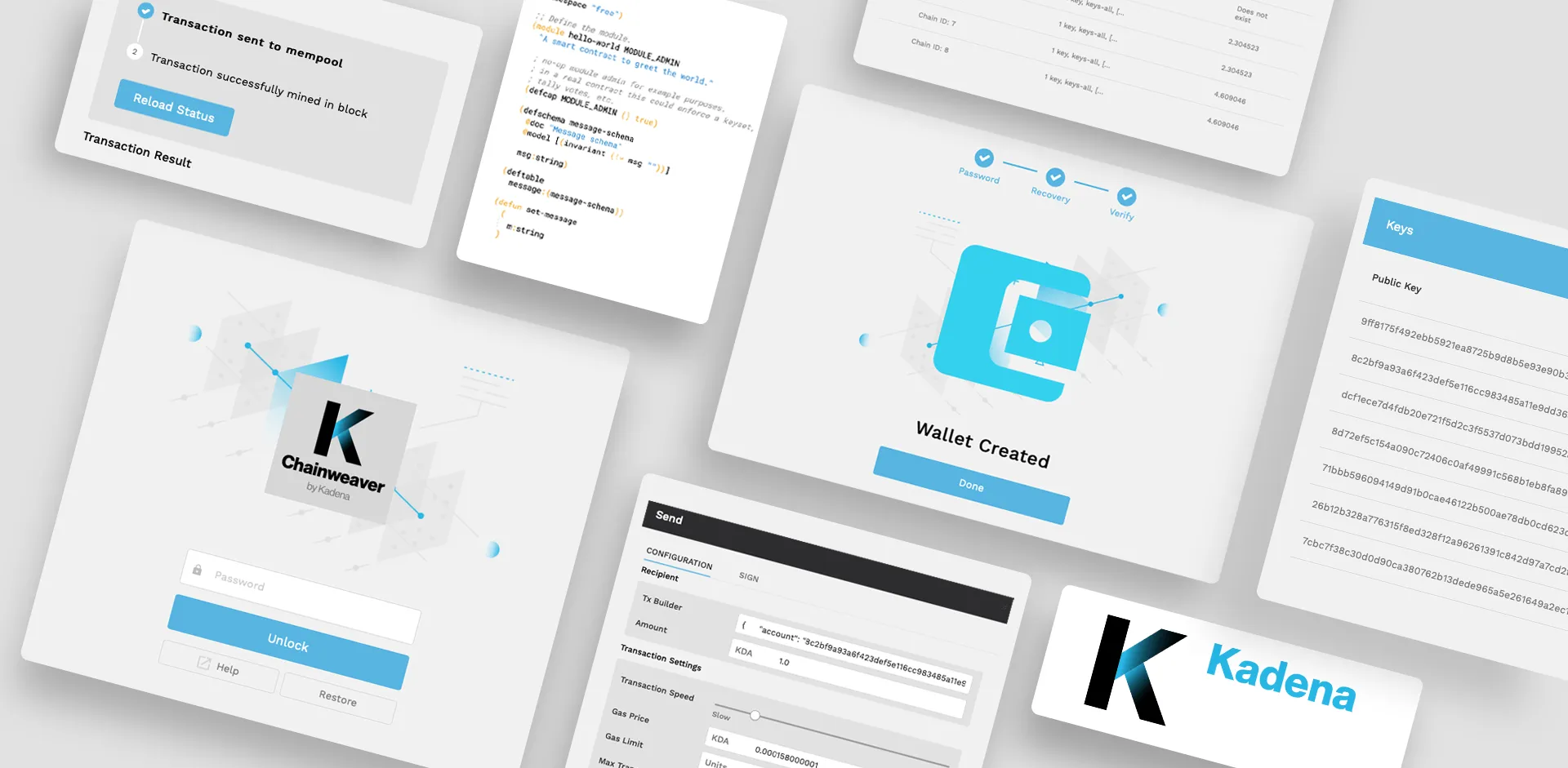Do Anything on the Kadena Blockchain with a Single Tool
Chainweaver is more than a crypto wallet, it is a full blockchain interface providing its users with unmatched control over their network activity.
**February 21, 2020 **—Today, Kadena announced the release of Chainweaver, the official cryptocurrency and smart contract wallet for the Kadena public blockchain. This production release offers versions that can be run on MacOS, Linux, and Windows (as a virtual appliance).
The open-source desktop application aims to drive adoption through improved user experience. With that goal in mind, today’s release incorporates many community-driven feature enhancements that were collected during an open beta period.
While many blockchains require a suite of tools to perform various tasks, Kadena’s Chainweaver is designed as a one-stop-shop for interacting with the blockchain. Some of the powerful features offered by Chainweaver include unique account configurations, custom transfer controls, a smart contract workbench, and enhanced security standards.
Keys and Accounts
In the Kadena ecosystem, users have unique controls to configure accounts to meet their specific requirements. For example, keys and accounts are differentiated; keys sign transactions, and accounts may be governed by one or multiple keys. This nuance accommodates many practical use cases that require multiple signatures for an account.
In the Keys screen, users can generate a key by clicking on the “+ Generate Key” button.

In the Accounts screen, users can add an account by clicking on the “+ Add Account” button. A user can either enter a name for an account that they want to watch or a name for an account that they want to create.
If the account already exists on the Kadena blockchain, the account will be added to the dashboard and its balance will be displayed.
If the account does not already exist on the Kadena blockchain, the user may choose to create the account. In doing so, the user may name their account after some public key (as is common in many other blockchains), or they may choose a more memorable account name. Again, users may choose for their account to be governed by one or multiple keys, and they may specify how many of their account’s keys must be present to authorize a transaction.

Transfer Configurations
The send & receive functionality is available in the Accounts screen by clicking on the “Send” or “Receive” buttons.

When it comes to transferring assets of value, users have visible control in executing operations. Before submitting any transfers, users may toggle a number of transaction settings including gas price, transaction speed, and time to live.

Kadena is a blockchain network comprised of multiple chains braided together. Chainweaver can perform cross-chain transfers, which it auto-detects when someone selects a different chain for the receiving of coins.

Smart Contract Workbench
A distinguishing component of Chainweaver comes in its native smart contract development environment. Users can write, test, and deploy contracts written in Pact, Kadena’s domain-specific smart contract language. The live editor returns error messages and supports Formal Verification.
Utilize the Module Explorer to view or call any deployed contract. Evaluate sample contracts to learn simple Pact commands. Supplement your learning with documentation and videos found within the Pact developer tutorial series.

Chainweaver also exposes a novel signing API, allowing users to easily interact with dApps without having to first navigate through a dApp browser.

Enhanced Security Standards
User safety remains front-and-center while building a crypto custody tool like Chainweaver. At every step, Chainweaver employs high-security standards to keep users safe from attackers and even from themselves (i.e. inadvertent errors).
During the wallet set up, users are required to record and verify a recovery phrase derived from similar protocols used in Bitcoin. Key pairs are generated in a deterministic way (i.e. HD wallet), aiding the recovery of multiple keys from a master seed.

When performing sensitive operations, Chainweaver frequently displays feedback to show the user state changes along the way. Before calling a function or authorizing a sign request, Chainweaver returns raw commands to reveal the code behind the operation. Furthermore, Chainweaver displays transaction previews so that the user may view the anticipated transaction impact or any potential errors before authorizing the operation.

Once a transaction has been submitted, Chainweaver displays the transaction’s status so that the user can see whether their transaction has been successfully mined in a block.

If a user would like to first practice an operation in a risk-free environment, they can easily toggle the active network to Testnet. More advanced users may even configure their own networks by inputting the desired nodes’ addresses.

Users can get free Testnet coins and play games using Chainweaver by going to Kadena’s Testnet Portal.
Detailed support instructions and further descriptions of Chainweaver’s features are available in the Chainweaver User Guide.

